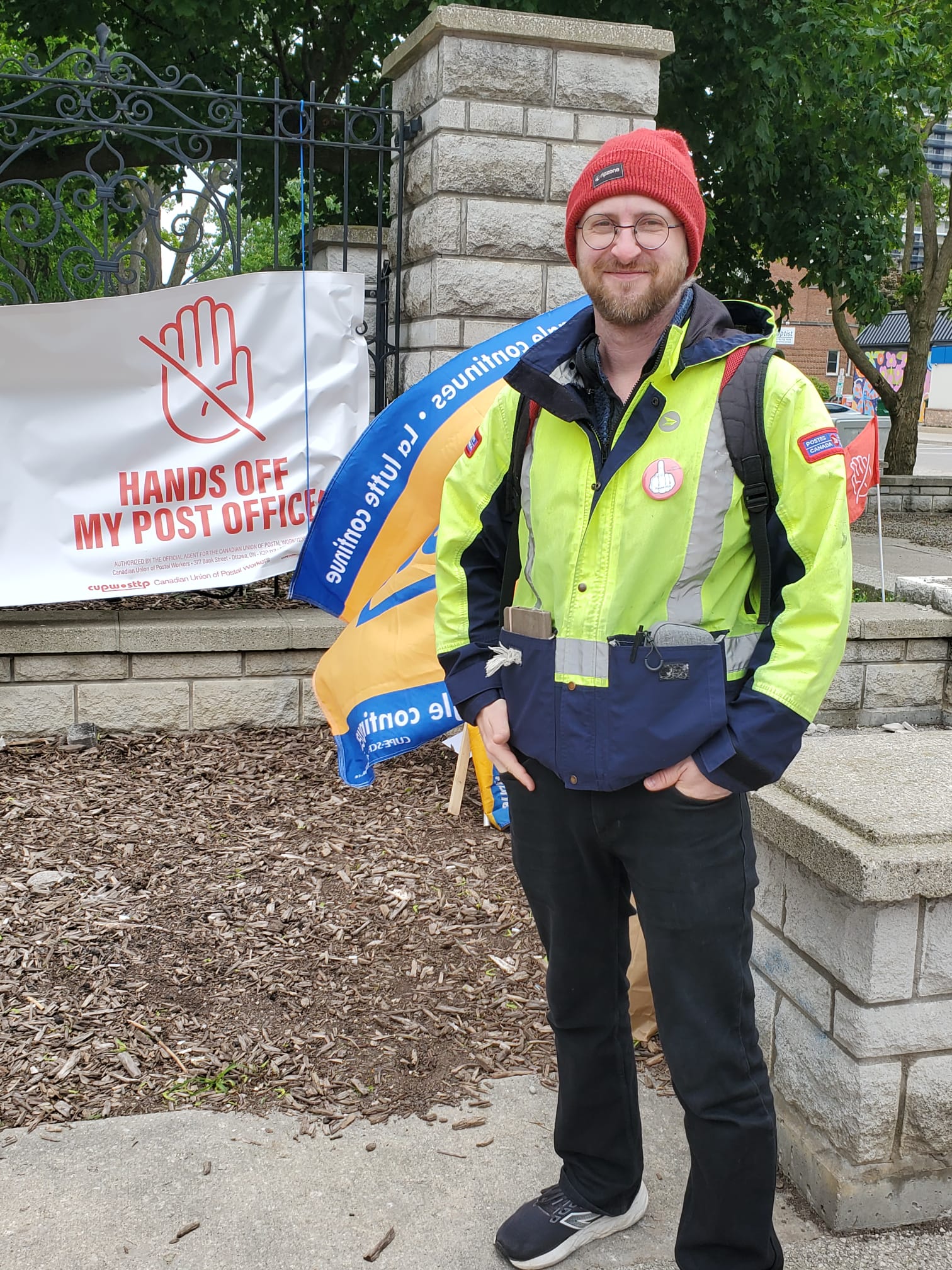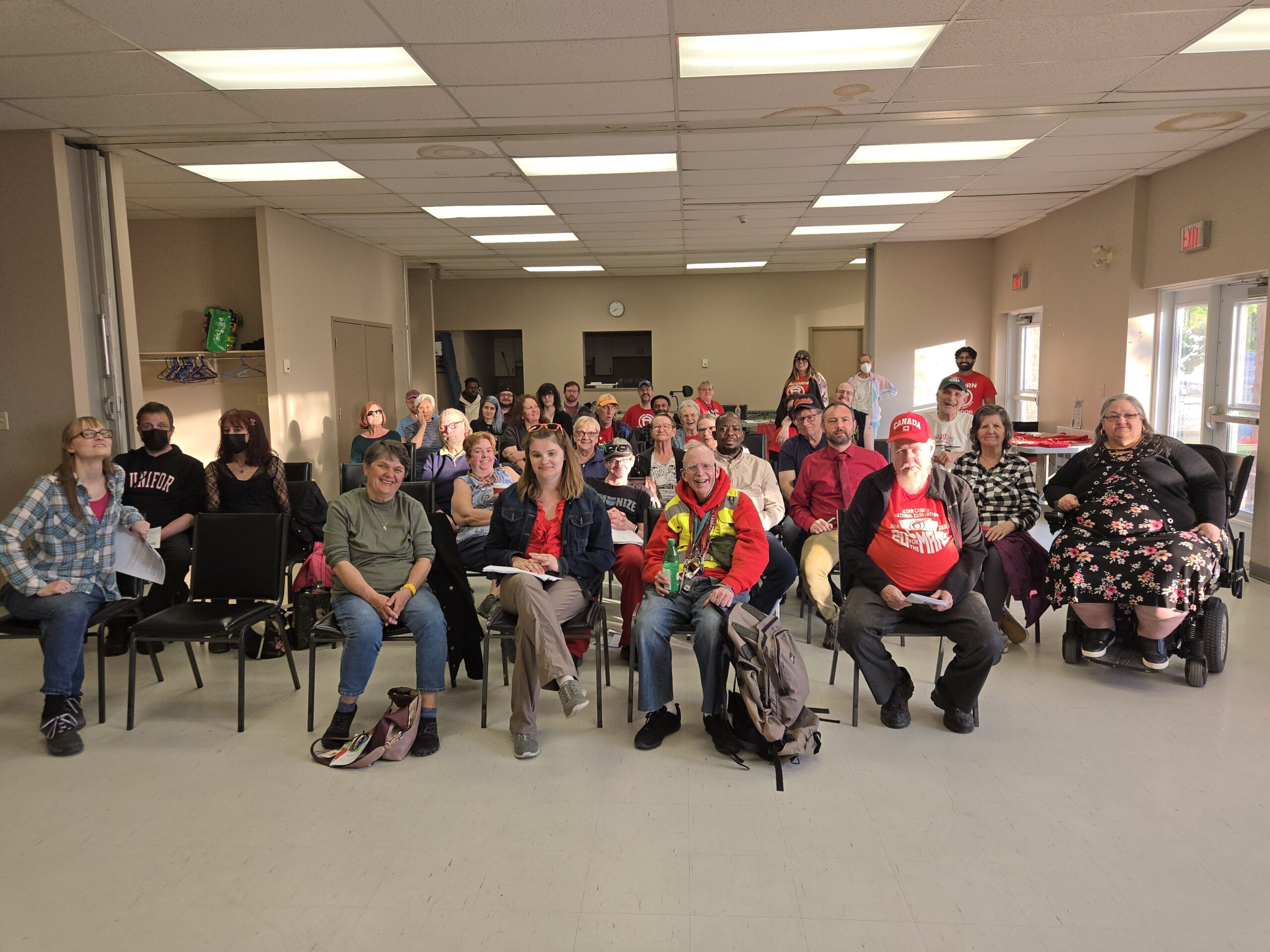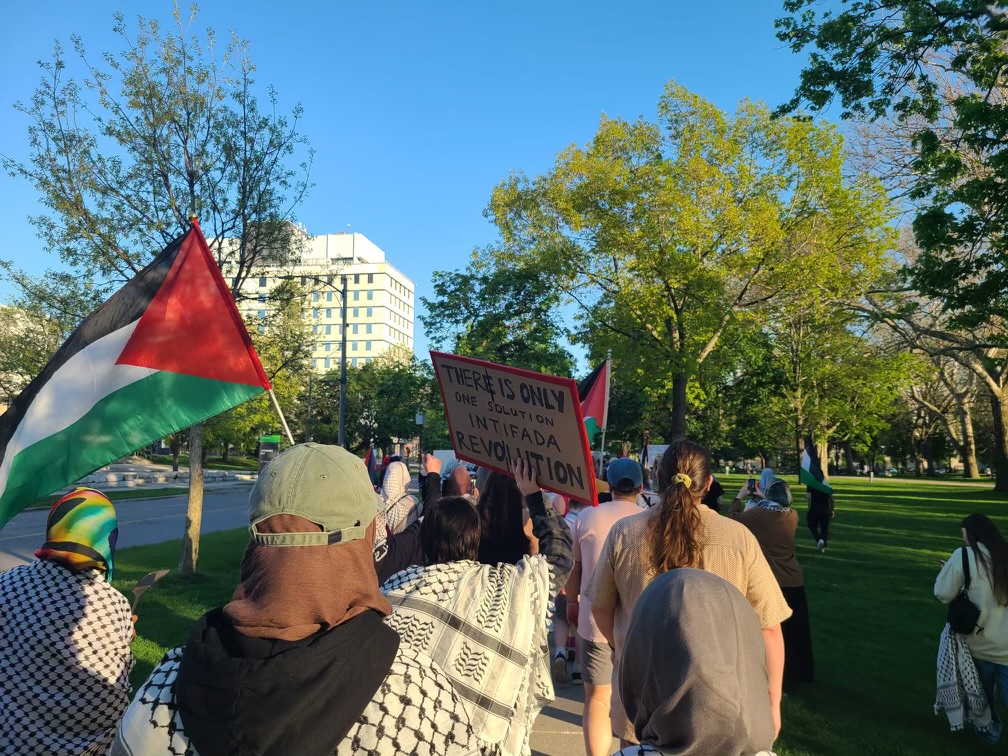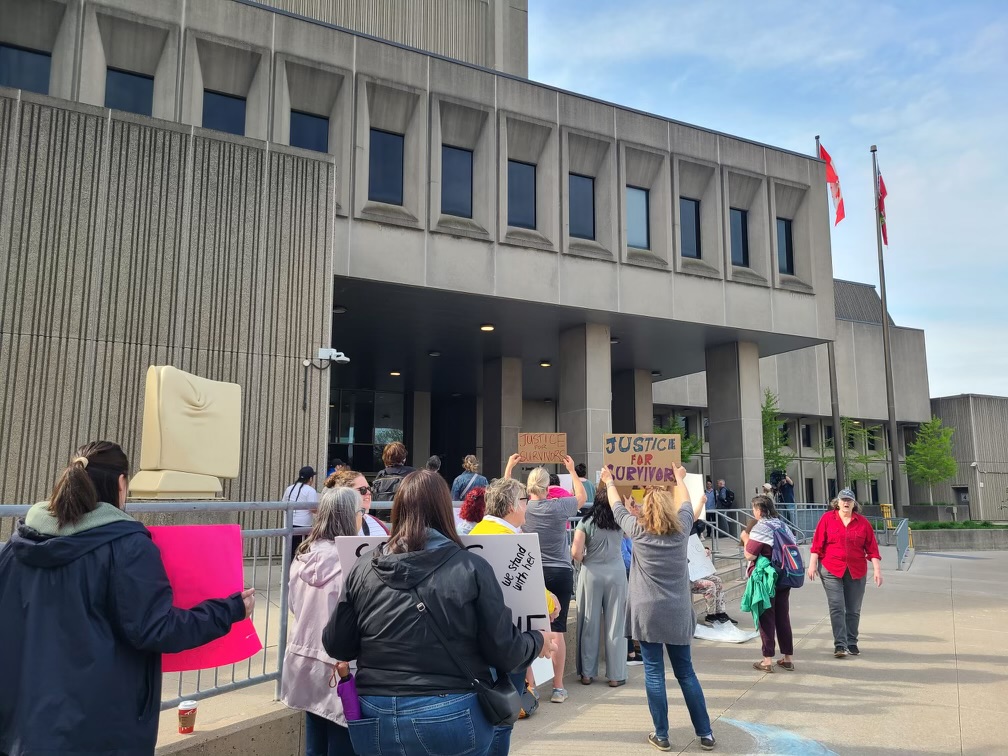Workers’ Compensation on First Strike in History: Wages, Workload, and Micromanagement Primary Concerns
Morgan Oddie
Sat May 31, 2025

Since May 22, over 200 workers have been on strike at the downtown London office on Fullarton Street for the Workplace Safety and Insurance Board (WSIB).
Represented by the Ontario Compensation Employees Union (OCEU) Local 1750, London workers are some of the over 3,600 employed by WSIB across Ontario. These workers are responsible for administering the employer insurance program for workers who are injured on the job.
“We are wanting a fair collective agreement. We are looking for increased wages, better workload management, less micromanagement of our workloads,” said Suzanne Flannery, Unit Coordinator for the London Office and head picket captain.
After a 96 per cent strike mandate from a membership vote, the bargaining unit has engaged in its first strike in the over 100-year history of the workers’ compensation organization in Ontario. OCEU is part of the Canadian Union of Public Employees (CUPE), but has historically been somewhat detached from the broader labour movement prior to this labour action.
WSIB has offered the workers a 4.5% wage increase over a 3-year contract. Striking members are concerned that it’s not enough to keep up with the cost of inflation.
“We’re already behind because of the COVID years and Bill 124,” said Flannery, who has worked for WSIB for 16 years.
Bill 124 was a controversial legislation passed by the Ford conservative provincial government in 2019 that capped public service workers’ wage increases at 1 per cent each year. It was struck down as unconstitutional in 2024 after Charter challenges by numerous labour unions in a broad coalition, including CUPE, the Ontario Federation of Labour, the Ontario Nurses’ Association, teaching unions, and others representing public sector workers. However, many impacted workers, including those in workers’ compensation for WSIB haven’t seen remedies.
Heavy workloads have been another primary concern for striking workers. Case Managers, who are responsible for determining financial entitlement of reported workplace injuries, have up to 140 cases to manage simultaneously.
“They say [case loads] are going down in the media, but that’s not my observation,” said Flannery. “It’s too much. We can’t continue to sustain this pace.”
Unable to comment on the WSIB policies themselves, Flannery did note that the work is complicated, and “we need the time to do the work.”
WSIB Funding Model; Rebates Concern Union and Injured Workers
WSIB funding comes from the insurance premiums paid by Employers, who are supposedly incentivized to safer workplaces because paid injuries impact their premiums. About 5.6 million workers are covered in 325,000 workplaces.
In February 2025, WSIB issued a “surplus” in excess of $2 billion back to businesses and Employers. They also announced a reduction of Employer premiums in the supposed interest of returning the money to the economy for business reinvestment.
This was the second rebate in the history of workers’ compensation in Ontario, with the first in 2022.
A statement from CUPE reads: “The WSIB management claims to care about the well-being of injured Ontario workers, and their staff. If that were true, the WSIB would have used the $4 billion rebates it gave employers to improve WSIB for injured workers, addressing crushing workloads, and bring OCEU members’ wages back to par with inflation.”
The most recent rebate occurred the same month that OCEU started bargaining with their Employer. This is also in the face of calls from injured workers’ advocates arguing for cost-of-living adjustments for workers with long-term injuries and increasing wage-loss benefits to 90% in line with rates in British Columbia, Alberta, Saskatchewan, Manitoba, and Quebec.
The Ontario Network of Injured Workers (ONIWG) released a statement in response to the rebates.
“[W]hile the WSIB continues to open the financial floodgates to employers, it also continues to ignore the demands of injured workers, further alienating a group already on the margins of society,” said Eugene Lefrancois, Treasurer of ONIWG.
There have also been concerns raised by workers’ advocates about the impact of WSIB policies on injured workers even when the legislation in the Workplace Safety and Insurance Act (WSIA) is seemingly on their side. For example, entitlements for chronic mental stress injuries, over 90 per cent have been rejected since the legislation was put in place in 2018. Another practice out of line with legislation is “deeming” compensation benefits for workers with permanent injuries as though they are working, even when they are unable to.
Injured Workers Online defines “deeming” as follows: “‘Deeming’ refers to the practice used by the workers’ compensation Board to decide the compensation that it will pay for loss of earnings as a result of workplace injury or illness. It reduces a permanently injured worker’s loss of earning benefits under the pretence that the worker is employed. This systemically leads to poverty among injured workers.”
Workers advocates have pointed to these two policies, among many, that have saved the WSIB and Employers money at the expense of the dignity and well-being of injured workers.
WSIB HQ Moving to London Amidst Outsourcing Concerns
WSIB has plans to move its headquarters from Toronto to London this year. When it was announced in 2023, London Major Josh Morgan was quoted as applauding the move of “high quality, recession-proof jobs” to the city.
WSIB purchased the former 3M Plant at 300 Tarton Drive for $21 million, citing the unsuitability and cost of maintaining the current jobs and adding new ones in the downtown core.
The move to London was intended to save further for WSIB because of cheaper real estate costs.
However, the Union has raised an alarm about outsourcing jobs to American companies. By contracting out the digitalization of paper records, 26 union members are poised for layoff.
Additionally, the Employer reportedly spent $14.5 million on a contract with BetterUp, an American coaching firm, to help employees with stress.
“It was money that in our opinion could have been spent elsewhere,” said Flannery.
Strike Ongoing; Injured Workers’ Day June 1
Negotiations are ongoing between OCEU and WSIB, and strike action will continue until a new collective agreement is reached.
Between 170-200 workers have been on the strike line each weekday from 10am to 2pm. The Union encouraged Londoners to come to the line.
“Everybody here is very united,” said Flannery. “People have been very supportive . . . They know we need resources. We appreciate that.”
On Sunday, June 1, London will observe Injured Workers’ Day in the northwest corner of Victoria Park from 11am to 1pm. The event has been organized by local labour advocates including Occupy WSIB, London and District Labour Council, Forrest City Solidarity Committee, and the Ontario Injured Workers Network.
“Injured Workers’ Day is an important day to renew our fight across the labour movement for justice and improved supports for injured and ill workers,” said Patti Dalton, President of the London and District Labour Council. “We demand that injured and ill workers be given compensation and benefits to live with dignity.”
According to the London and District Labour Council, fighting for improvements to legislation and policy application is paramount.
This includes, “universal workers compensation coverage, access to healthcare, making deeming illegal, ensuring the ruse of so-called pre-existing conditions not be allowed to axe benefits, and fighting to ensure that injured workers who reach age 65 aren’t penalized on the basis of are with loss of earnings or limits on benefits.”
The public, and in particular, workers and trade unions, are encouraged to attend Injured Workers’ Day as well as express solidarity with the striking OCEU workers who administer compensation for WSIB.






